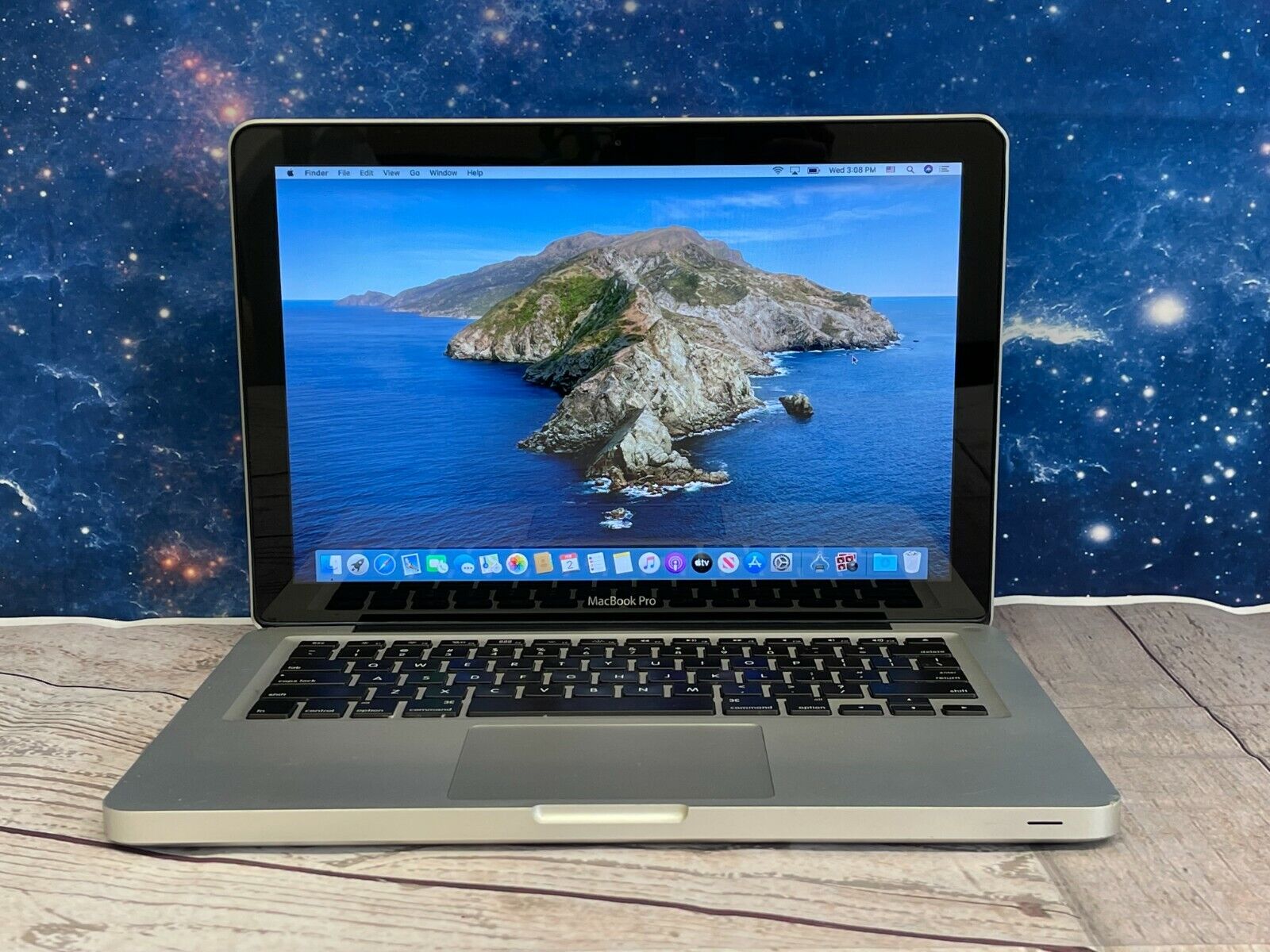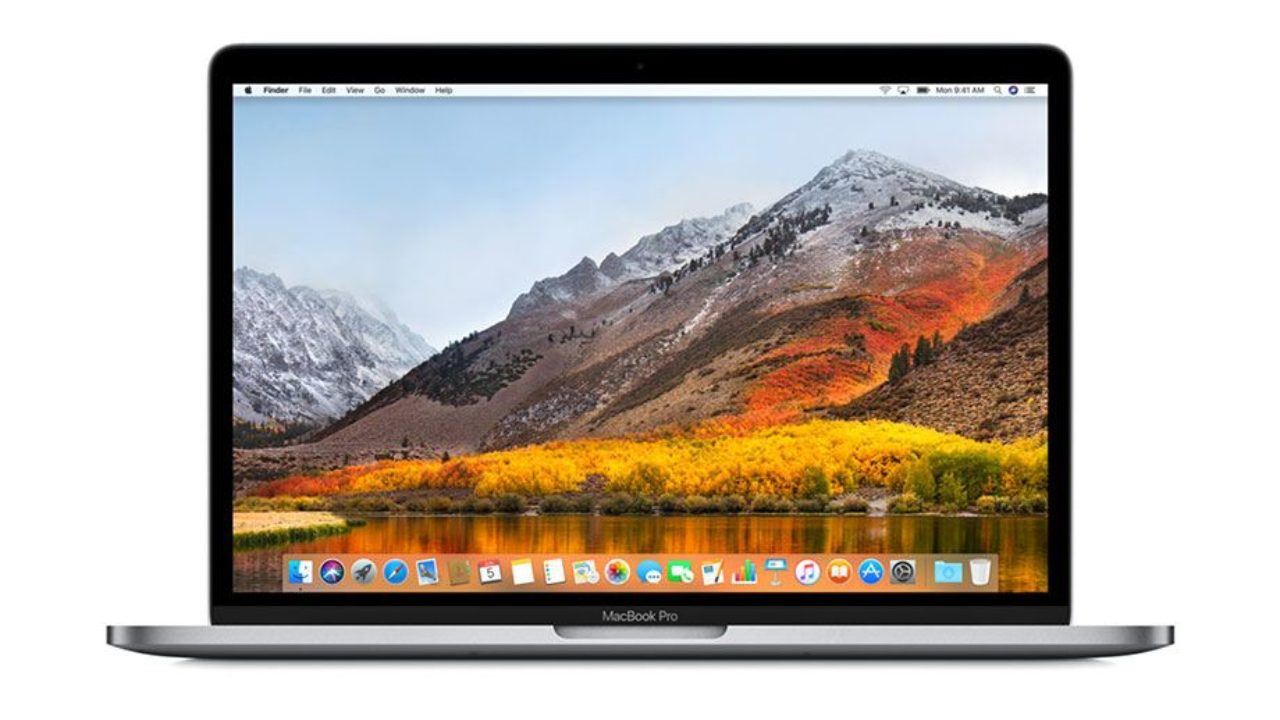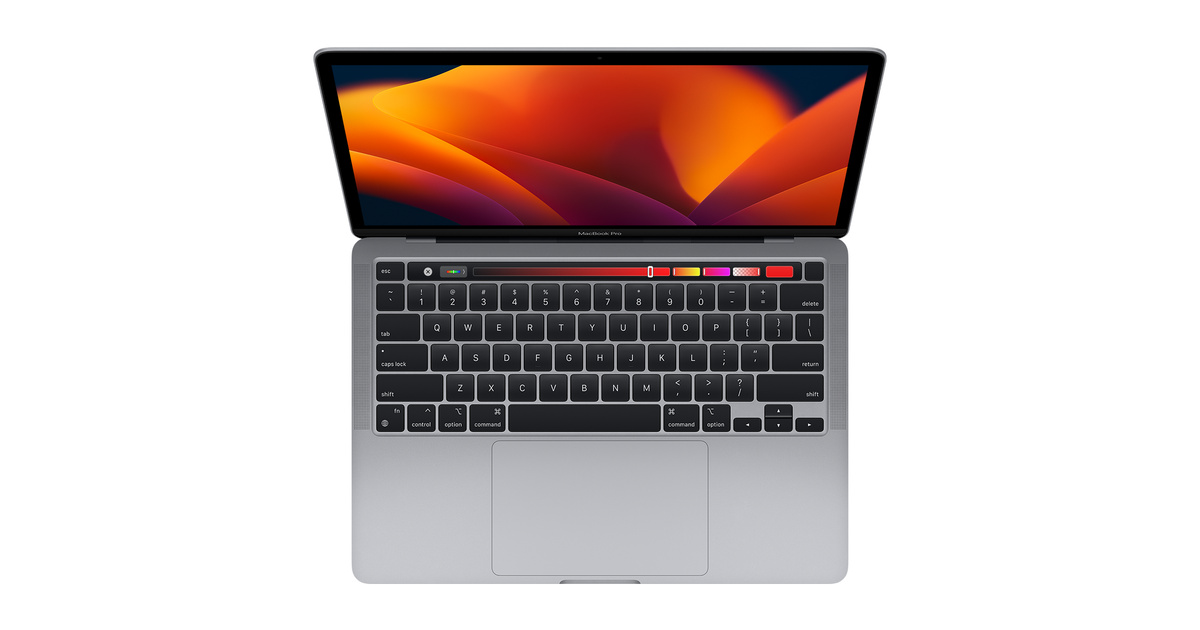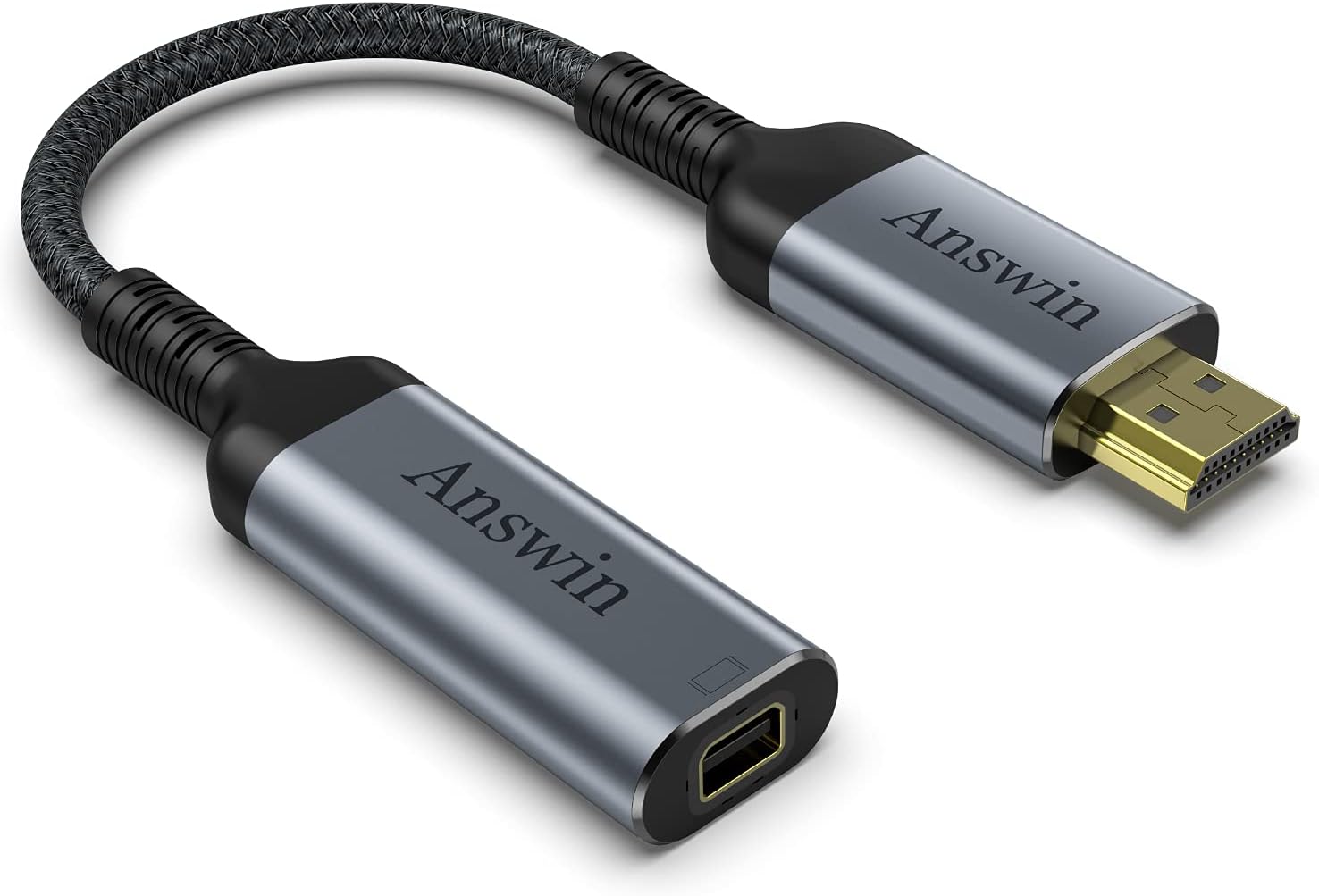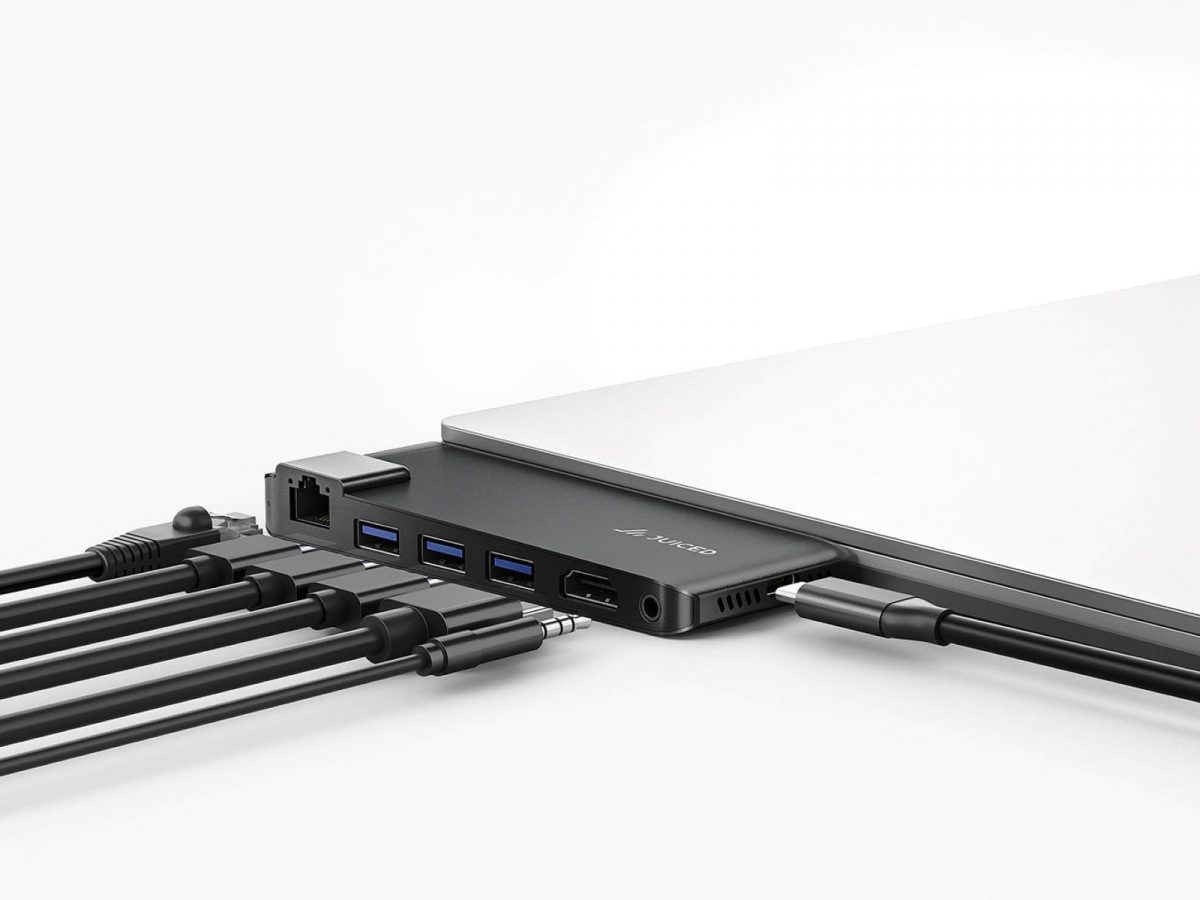Introduction
Welcome to the world of Macbook Pro, where style meets performance. One of the key components of this powerful laptop is the graphics card. A graphics card, also known as a video card or GPU (Graphics Processing Unit), is responsible for rendering images, videos, and animations on your screen.
The graphics card plays a crucial role in delivering an immersive visual experience and ensuring smooth performance for tasks such as video editing, gaming, and graphic design. It determines the quality and speed at which graphics are displayed on your Macbook Pro.
With the rapid advancements in technology, graphics cards have evolved significantly over the years. Macbook Pro offers a range of options to cater to different user needs. Whether you are a casual user, a content creator, or a professional gamer, there is a graphics card available for you.
In this article, we will explore the different types of graphics cards found in Macbook Pro, discuss the models available for each, and provide insights on how to choose the right graphics card based on your requirements.
So, if you’re curious about what kind of graphics card your Macbook Pro has or if you’re considering purchasing a new Macbook Pro and want to know what options are available, you’ve come to the right place. Let’s dive in and discover the world of graphics cards in Macbook Pro.
Macbook Pro Overview
The Macbook Pro is a premium line of laptops developed by Apple Inc. Known for its sleek design, powerful performance, and advanced features, the Macbook Pro is a favored choice among professionals and creative individuals.
Featuring a high-resolution Retina display, a responsive trackpad, and a user-friendly operating system, the Macbook Pro offers an exceptional user experience. It is available in two sizes: 13-inch and 16-inch, each catering to different needs and preferences.
With regards to graphics capabilities, the Macbook Pro comes equipped with either an integrated graphics card or a discrete graphics card, depending on the specific model you choose. These graphics cards are responsible for handling graphical tasks and ensuring smooth performance while working with graphics-intensive applications and games.
In addition to graphics performance, the Macbook Pro is celebrated for its impressive processing power, thanks to the latest generation of Intel Core processors. This combination of powerful processors and graphics cards allows for seamless multitasking and effortless handling of demanding applications.
Storage capacity is another notable aspect of the Macbook Pro. With solid-state drives (SSD) ranging from 256GB to 4TB, users have ample space to store their files, documents, and media. The speedy SSDs also contribute to faster boot times and application launches.
Furthermore, the Macbook Pro boasts a premium build quality, featuring an aluminum unibody construction that not only enhances durability but also adds to its aesthetic appeal. The laptop is slim, lightweight, and portable, making it a convenient choice for professionals who need to work on the go.
Overall, the Macbook Pro offers a compelling package of cutting-edge features, exceptional performance, and elegant design. Whether you are a creative professional, a student, or a business user, the Macbook Pro delivers a seamless computing experience with top-of-the-line graphics capabilities.
Graphics Card Types
When it comes to graphics cards, there are two main types you’ll encounter: integrated graphics cards and discrete graphics cards. Let’s take a closer look at each of these types:
An integrated graphics card, also known as onboard graphics or Intel HD Graphics, is integrated directly into the computer’s motherboard. These graphics cards use a portion of the system’s RAM (Random Access Memory) to handle graphical tasks.
Integrated graphics cards are commonly found in entry-level laptops and are suitable for everyday tasks such as web browsing, light photo editing, and document processing. They are not designed for intensive graphics applications or gaming, as they have limited processing power.
However, advancements in integrated graphics technology have improved their performance, making them capable of handling some casual gaming and multimedia tasks. They are energy-efficient and do not generate as much heat as discrete graphics cards.
2. Discrete Graphics Card:
A discrete graphics card, also known as a dedicated graphics card or GPU, is a separate component from the computer’s main processor. It has its own dedicated memory and processing unit, specifically designed for handling graphics-intensive tasks.
Discrete graphics cards offer higher performance and are capable of handling demanding applications such as video editing, 3D modeling, and gaming. They have their own cooling systems and power supply requirements, making them more suitable for high-performance laptops.
Discrete graphics cards are equipped with advanced features such as increased memory capacity, higher clock speeds, and dedicated processing cores. They provide a smoother and more immersive gaming experience, with the ability to handle high-resolution displays and virtual reality (VR) content.
It is worth noting that not all Macbook Pro models have discrete graphics cards. Some lower-end models come with integrated graphics cards, while higher-end models offer the option for a more powerful discrete graphics card.
Now that we have a basic understanding of the graphics card types, let’s move on to explore the specific graphics card models available in the Macbook Pro lineup.
Integrated Graphics Card
Integrated graphics cards are commonly found in entry-level Macbook Pro models. These cards utilize a portion of the system’s RAM to handle graphical tasks, as they are integrated directly into the computer’s motherboard.
One of the main benefits of integrated graphics cards is their energy efficiency. They consume less power compared to discrete graphics cards, resulting in longer battery life for your Macbook Pro. This makes them ideal for users who prioritize portability and need their laptop to last throughout the day without needing to recharge.
While integrated graphics cards may not offer the same level of performance as discrete graphics cards, they have come a long way in terms of capabilities. With advancements in technology, integrated graphics cards now provide better graphic rendering and smooth playback of multimedia content.
The integrated graphics cards used in Macbook Pro models typically come from Intel’s HD Graphics series. These cards are capable of handling basic tasks such as web browsing, document editing, and media playback without any issues. They are also suitable for light photo editing and casual gaming.
However, it is important to note that integrated graphics cards may struggle with more demanding applications such as video editing, 3D modeling, and high-end gaming. These tasks require a higher level of performance, which is where discrete graphics cards shine.
Despite their limitations, integrated graphics cards are a cost-effective solution for users who primarily use their Macbook Pro for everyday tasks and don’t require the extra power and capabilities of a discrete graphics card. They still provide a satisfactory graphical experience for most general computing needs.
When purchasing a Macbook Pro with an integrated graphics card, it is essential to consider the specific model’s capabilities and the intended use of the laptop. If you require more intensive graphics processing, such as running professional software or playing graphics-intensive games, you may want to consider a model with a discrete graphics card option.
Now that we have explored the integrated graphics card options available in Macbook Pro, let’s move on to discuss the specific graphics card models found in different Macbook Pro models.
Discrete Graphics Card
For users who require more power and performance from their Macbook Pro, the option for a discrete graphics card is available on select models. Unlike integrated graphics cards, discrete graphics cards are separate components that have their own dedicated memory and processing unit.
A discrete graphics card provides significant advantages, especially for tasks that demand high graphical performance. These tasks may include video editing, 3D modeling, animation, and gaming. With a discrete graphics card, you can expect smoother rendering of graphics, better frame rates, and more realistic visual effects.
Macbook Pro models offering a discrete graphics card option are equipped with GPUs from AMD and NVIDIA, two renowned manufacturers in the graphics industry. These GPUs provide higher memory capacity, increased clock speeds, and dedicated processing cores designed to handle demanding graphics-related tasks.
One of the main benefits of a discrete graphics card is its ability to support high-resolution displays. Macbook Pro models equipped with discrete graphics cards can power external monitors with resolutions up to 5K, allowing users to work with larger screens and enjoy a more immersive visual experience.
Discrete graphics cards are essential for gamers who want to play the latest titles with high frame rates and detailed graphics settings. They also come in handy for professionals working with graphic-intensive software such as Adobe Creative Suite, AutoCAD, and 3D rendering applications.
It’s important to note that while a discrete graphics card delivers superior performance, it does consume more power and may generate more heat compared to integrated graphics cards. This can affect the overall battery life of your Macbook Pro and may result in a slightly thicker and heavier laptop design.
When selecting a Macbook Pro with a discrete graphics card, it’s crucial to consider your specific needs and the level of graphics performance required for your tasks. You may want to opt for a model with a higher-end discrete graphics card if you work with intensive applications or if gaming is a priority for you.
Now that we have explored the benefits and capabilities of discrete graphics cards in Macbook Pro models, let’s move on to discuss the specific graphics card models available in different Macbook Pro configurations.
Graphics Card Models in Macbook Pro
Macbook Pro models come in various configurations, each offering different graphics card options to cater to specific user needs. Let’s dive into the specific graphics card models you can find in different Macbook Pro configurations:
Macbook Pro 13-inch Models:
The 13-inch Macbook Pro models typically come with integrated graphics cards. These models feature Intel’s integrated Iris Plus Graphics, which provide decent performance for everyday tasks and casual gaming. The specific performance may vary depending on the processor configuration.
For more demanding graphics tasks, such as professional video editing or gaming, there is an option to configure the 13-inch Macbook Pro with a discrete graphics card. These models come equipped with Intel Iris Xe Graphics or the more powerful AMD Radeon Pro graphics, offering enhanced performance and capabilities.
Macbook Pro 16-inch Models:
The 16-inch Macbook Pro models offer a higher level of graphics performance, making them suitable for professionals and power users. These models come with discrete graphics cards from AMD, specifically the Radeon Pro 5300M or the more powerful Radeon Pro 5500M.
The Radeon Pro 5300M offers a balance of performance and power efficiency, while the Radeon Pro 5500M provides even greater performance for intensive tasks such as video editing, 3D rendering, and gaming.
Both 16-inch models feature dedicated graphics memory, resulting in smoother visual effects, faster rendering times, and improved overall performance for graphics-intensive applications.
It’s important to note that the specific graphics card options may vary based on the configuration and customization options available at the time of purchase. Additionally, Apple regularly updates the graphics card options for their Macbook Pro models to incorporate the latest technology and advancements.
When choosing a Macbook Pro, consider the specific graphics card model that best aligns with your intended use. If you primarily work with graphics-intensive tasks, it may be advantageous to opt for a model with a more powerful graphics card to ensure optimal performance and productivity.
Now that we have explored the different graphics card models available in Macbook Pro configurations, let’s move on to discuss the factors to consider when choosing a graphics card for your Macbook Pro.
Macbook Pro 13-inch Models
The Macbook Pro 13-inch models offer a balance of portability and performance, making them a popular choice among professionals and students. When it comes to graphics capabilities, these models offer both integrated and discrete graphics card options based on your specific needs.
Integrated Graphics Card:
The base configurations of the Macbook Pro 13-inch models come equipped with integrated graphics cards. These models feature Intel’s integrated Iris Plus Graphics, which provide decent performance for everyday tasks such as web browsing, document editing, and media playback.
Intel Iris Plus Graphics deliver smooth graphics rendering, allowing you to watch high-definition videos and work with basic graphic applications without any issues. They are suitable for light photo editing and casual gaming but may struggle with more demanding graphic-intensive tasks.
Discrete Graphics Card:
For users who require more power for creative work or gaming, the 13-inch Macbook Pro can be configured with a discrete graphics card. The latest models offer the option to have Intel Iris Xe Graphics or the more powerful AMD Radeon Pro graphics.
Intel Iris Xe Graphics offers better performance compared to integrated graphics, allowing for smoother graphics rendering and improved multitasking capabilities. It is suitable for tasks such as photo and video editing, as well as playing casual games.
For those who require even more graphical power, the options with AMD Radeon Pro graphics deliver superior performance. With dedicated graphics memory and powerful processing capabilities, these models can handle more demanding tasks, including professional-grade graphics applications and gaming.
It’s worth noting that Macbook Pro 13-inch models with discrete graphics cards may have slightly higher power consumption and generate more heat compared to those with integrated graphics. However, they provide a significant boost in graphics performance, delivering a more immersive and efficient computing experience.
When choosing a Macbook Pro 13-inch model, consider your specific needs and budget. If you primarily use your laptop for everyday tasks and lighter graphics work, the integrated graphics card options should suffice. However, if you require more power for creative work or gaming, investing in a model with a discrete graphics card can significantly enhance your overall experience.
Now that we have explored the graphics card options in the 13-inch Macbook Pro models, let’s move on to discuss the 16-inch models and the graphics card options they offer.
Macbook Pro 16-inch Models
The Macbook Pro 16-inch models are designed for professionals and power users who require top-of-the-line performance and graphics capabilities. These models offer a larger display and more powerful hardware configurations, including impressive graphics card options that cater to intensive tasks such as video editing, 3D rendering, and gaming.
When it comes to graphics, the 16-inch Macbook Pro models provide an exceptional experience with discrete graphics cards from AMD.
Radeon Pro 5300M:
The base configuration for the Macbook Pro 16-inch models includes the AMD Radeon Pro 5300M. This graphics card offers excellent performance for graphics-intensive tasks, making it suitable for professional work such as video editing, graphic design, and 3D modeling.
The Radeon Pro 5300M comes with dedicated video memory, allowing for smoother rendering, faster exporting, and improved overall performance. It can handle demanding applications and provide a seamless experience for professionals who rely on their Macbook Pro for their creative workflows.
Radeon Pro 5500M:
For even more power and performance, users have the option to upgrade their Macbook Pro 16-inch models with the AMD Radeon Pro 5500M. This graphics card offers enhanced capabilities for demanding tasks and allows for a more immersive gaming experience.
The Radeon Pro 5500M comes with a larger memory capacity and higher clock speeds, delivering faster processing and improved graphics performance. It handles intensive workflows with ease, whether you’re working on complex editing projects, rendering high-resolution graphics, or playing the latest games at higher settings.
The combination of the large 16-inch display, powerful processors, and dedicated graphics cards make the Macbook Pro 16-inch models the ultimate choice for professionals who require the highest level of performance for their graphics-intensive workflows.
When selecting a 16-inch Macbook Pro, consider the specific tasks you’ll be performing and the level of graphics performance required. If you work with intensive applications, require smooth gameplay, or need to handle large multimedia files, opting for a model with the Radeon Pro 5500M graphics card can provide the best experience and ensure optimal productivity.
Now that we have explored the graphics card options in the 16-inch Macbook Pro models, let’s move on to discuss the factors to consider when choosing a graphics card for your Macbook Pro.
Factors to Consider when Choosing a Macbook Pro Graphics Card
Choosing the right graphics card for your Macbook Pro is essential, as it directly affects the performance and capabilities of your laptop. Here are some key factors to consider when making your decision:
1. Intended Use:
Consider the primary tasks you’ll be using your Macbook Pro for. If you primarily use it for everyday tasks such as web browsing, document editing, and media playback, an integrated graphics card may be sufficient. However, if you work with graphics-intensive applications or play demanding games, a discrete graphics card is recommended for optimal performance.
2. Performance Requirements:
Determine the level of performance you require for your specific tasks. If you work with professional software such as video editing, 3D modeling, or animation, a more powerful graphics card with dedicated memory will ensure smoother rendering and faster processing. Gamers should also consider a higher-end graphics card for better frame rates and graphical detail.
3. Budget:
Graphics card options can vary in terms of cost. Discrete graphics cards tend to be more expensive than integrated ones. Consider your budget and choose a graphics card that provides a good balance between performance and cost to suit your needs.
4. Future-Proofing:
Think about your future needs and how long you plan to use your Macbook Pro. Investing in a more powerful graphics card can provide better longevity and ensure your laptop remains capable of handling future software updates and advancements in technology.
5. External Display Support:
If you plan to connect your Macbook Pro to an external monitor or use multiple monitors, consider the maximum resolution and number of displays supported by the graphics card. This will ensure compatibility and optimal performance when working with larger screens.
6. Energy Efficiency:
For users who prioritize battery life and portability, it’s beneficial to consider the power consumption and heat generation of the graphics card. Integrated graphics cards generally consume less power compared to discrete ones, resulting in better battery life for your Macbook Pro.
By considering these factors, you can make an informed decision when choosing the right graphics card for your Macbook Pro. Take into account your needs, budget, and the demands of your specific tasks, ensuring a smooth and enjoyable computing experience.
Conclusion
Choosing the right graphics card for your Macbook Pro is crucial for optimal performance and a satisfying computing experience. Understanding the different types of graphics cards, such as integrated and discrete, allows you to make an informed decision based on your specific needs and budget.
Integrated graphics cards, such as Intel’s Iris Plus Graphics, are suitable for everyday tasks and casual gaming. They provide energy efficiency and are found in the base configurations of Macbook Pro models. However, for more demanding tasks like video editing, 3D rendering, and professional-grade gaming, a discrete graphics card is recommended for superior performance.
Macbook Pro 13-inch models offer both integrated and discrete graphics card options, providing a balance between portability and performance. The 16-inch models, on the other hand, cater to professionals with more powerful discrete graphics cards, such as AMD’s Radeon Pro series, delivering exceptional graphics capabilities and faster processing speeds.
Factors to consider when selecting a graphics card include your intended use, performance requirements, budget, future-proofing, external display support, and energy efficiency. By carefully considering these factors, you can choose a graphics card that best suits your needs and ensures optimal performance for your specific tasks.
Ultimately, the graphics card plays a vital role in delivering a visually immersive experience, whether you’re working on creative projects, playing games, or simply enjoying multimedia content. With the right graphics card in your Macbook Pro, you can unlock the full potential of your laptop and ensure a seamless and productive computing experience.







